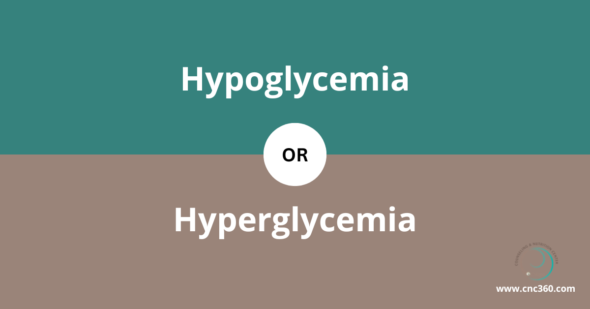It’s important to know the symptoms for hypoglycemia and hyperglycemia.
You may notice additional symptoms, other than those listed below, that your body offers to cue a low or elevated glucose, and these are important to value and take the time to respond.
Here are some symptoms of low glucose:
- Fast heartbeat
- Shaking
- Sweating
- Nervousness or anxiety
- Irritability or confusion
- Dizziness
- Hunger
- Headache
- Scary dreams
Here are some symptoms of high glucose:
- Urinate (pee) a lot, often at night
- Are very thirsty
- Are very hungry
- Have blurry vision
- Have numb or tingling hands or feet
- Feel very tired
You can also check the Centers for Disease Control and Prevention for symptoms.

If symptoms that are not tied to a glucose response, this can help spark a more informed conversation with a health care provider to explore other causes of such symptoms.
Interoceptive awareness related to glucose level is important for people with diabetes, as it can guide decision making and prevent severe hypoglycemia. Interruptions in the supply chain in recent years has led to an increased feeling of vulnerability for patients with diabetes who cannot access their continuous glucose monitor (CGM) technology as expected.
Targets for glucose management
Interoceptive awareness may lead to someone feeling these symptoms when either a rapid shift of glucose is happening (even if the actual glucose level remains in the target range) or if the glucose value is out of range. In diabetes care, the target range is commonly a fasting value of 80-130 mg/dl, and <180mg/dl 2 hrs after eating. Hypoglycemia, or low glucose, is defined as glucose <70mg/dl. There are additional levels of hypoglycemia as glucose lowers.
What to do when trending up or down and it does not match your appetite cues?
At times people using CGM may feel surprised that when they thought their glucose was low due to feeling shaky, it was primarily attributed to hunger, but for others this hunger was a strong clue that their glucose was low.
False measures
When a CGM is placed on the arm, there may be a “pressure low” or false low due to the pressure on the CGM from the sleeping position overnight. This can lead to an alarm that wakes someone up. This low glucose can be verified using a glucose meter, or may quickly resolve when the person changes position.
There are some occasions it can be helpful to refer to a glucose meter to corroborate data. Keep in mind that a fingerstick reflects blood, and the CGM monitors interstitial fluid, so there is a delay in the CGM data compared to the glucose meter reading.
If you have questions about hypoglycemia or hyperglycemia, please feel free to reach out to us.
